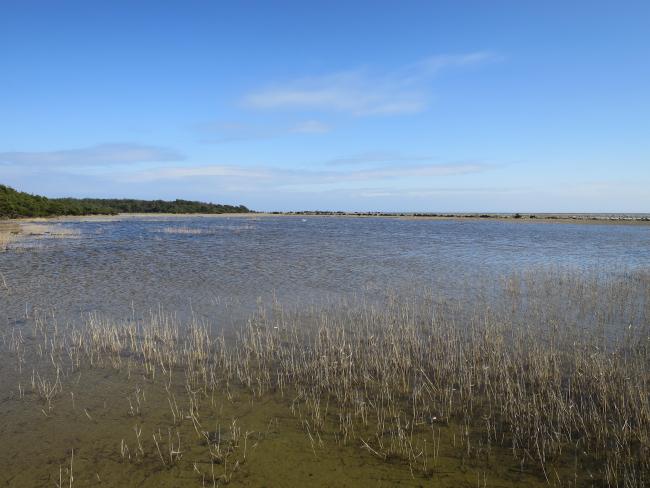Gotlands ostkust
Gotlands ostkust
- Country:
- Sweden
- Site number:
- 21
- Area:
- 4,963.8 ha
- Designation date:
- 05-12-1974
- Coordinates:
- 57°16'18"N 18°38'54"E
Carousel
CarouselMaterials presented on this website, particularly maps and territorial information, are as-is and as-available based on available data and do not imply the expression of any opinion whatsoever on the part of the Secretariat of the Ramsar Convention concerning the legal status of any country, territory, city or area, or of its authorities, or concerning the delimitation of its frontiers or boundaries.
The Site includes six subsites along the east coast of the island of Gotland, one of the largest on the Baltic Sea. Its coastline, low-lying islands and shallow seas host a great diversity of marine and coastal wetlands. Habitats include grazed meadows of varying degrees of wetness and extensive gravel banks. Numerous waders and Anatidae (ducks, geese, swans) stage in the area, including Bewick’s swan Cygnus columbianus bewickii, and it is of international importance as a staging area for migrating barnacle geese Branta leucopsis, in numbers exceeding 1% of the relevant population. The complex is also important for various species of breeding waterbirds. The continuation of traditional grazing is essential for maintaining the Site’s value for breeding and staging birds. Access is restricted. The Site’s boundaries were extended in 2001 and again in 2018 to better correspond to other protected areas.
- bird sanctuary - Faludden
- bird sanctuary - Hummelbosholm
- bird sanctuary - Skenholmen
- bird sanctuary - Stockviken
- nature reserve - Gotlandskusten
- nature reserve - Grötlingboholme
- nature reserve - Laus holmar
- nature reserve - Närsholmen
- nature reserve - Rone ytterholme
- EU Natura 2000
- SE21RIS_1809_en.pdf
- SE21RISformer_EN.pdf
- SE21RISformer_150218.pdf
- SE21_map180628.pdf






